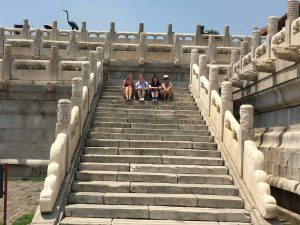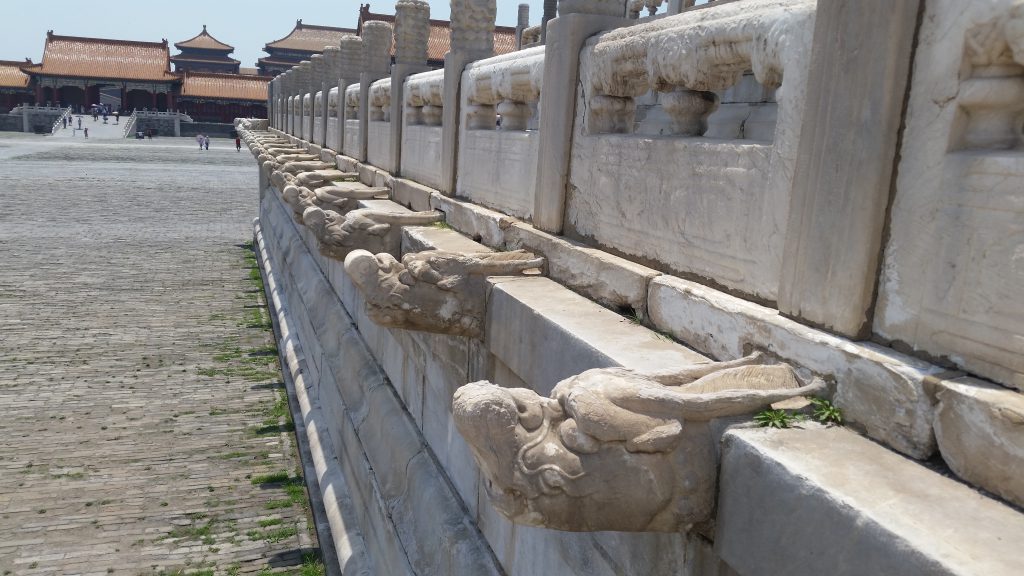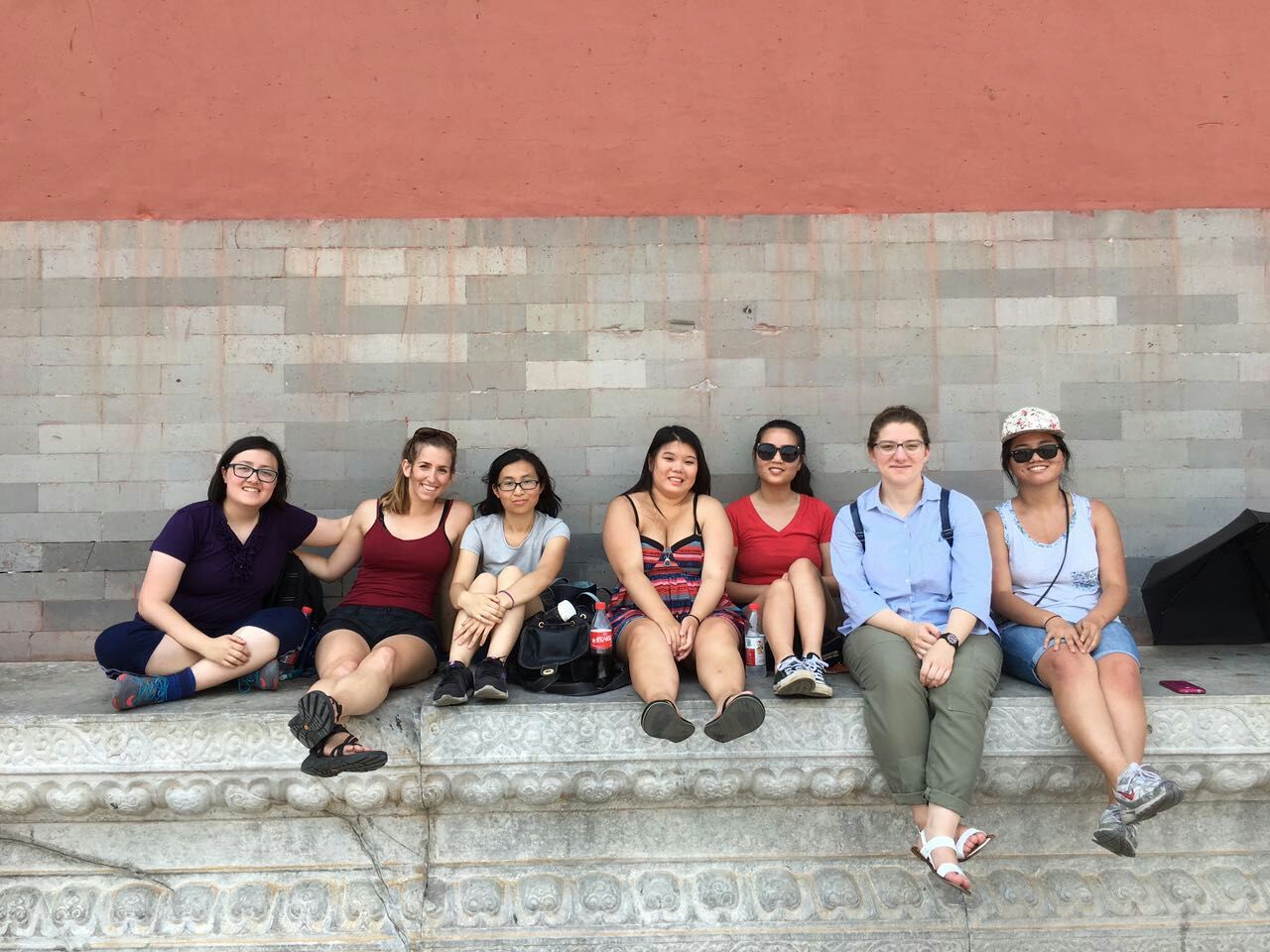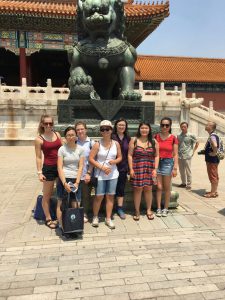One of the coolest things about this program is that we are able to explore Beijing’s cultural keystones. Thus far, the school as organized trips for us to Tiananmen, The Forbidden City, and the Great Wall–some historic sites in and around Beijing.
The Forbidden City, also called the Imperial Palace, is absolutely magnificent. There was an incredible amount of people, but 故宫 is so large that if you needed to, you could easily find more space. The Forbidden City is 720,000 square meters, after all.

Walking across the plaza and crossing over some of the older stonework, it was one of the most surreal things to realize that some of these buildings and the stones we were stepping on were likely part of the original palace, making them almost six centuries old. (The Forbidden Palace was completed in 1420!) Even the parts of the palace that were restored or renovated are comprised of stonework much older than me, or anyone I know.
The stonework and ornamentation of the Imperial Palace is impressive. The palace has been preserved with painstaking care and renovated with careful attention to detail. The colors of the palace are vibrant; the greens and blues in the roof contrasting well with painted colors of the buildings.
The statues watching over the main courtyard are especially impressive. There many dozens of these hand carved dragon heads who seem to watch over the courtyard like the gargoyles found in Europe. I was especially impressed by quite how much detail can be made out on each head, how uniform it is, and the fact that these near-six century old statues have kept their distinctive appearance instead of eroding away.

I would gladly visit the Imperial Palace again. It is composed of both the main palace and many smaller temples. The attention to detail is seemingly endless no matter where you are. Everything has been meticulously planned, from the heights of the doors to the layout of the buildings, and ornately decorated, like the hand carved ceiling of a small Summer Temple at the Imperial Palace.

Below are some other pictures from the Forbidden City, called 故宫 in Chinese.


I am glad that PKU makes sure we can learn about the amazing history of Beijing. Whether or not you are second year, third year, or beyond in this program, I think that all of us feel a little refreshed after these trips. They serve to further motivate us, catalyzing thoughts and discussions on historical significance, cultural development, and the continued relevance of these sites.
Some linguists say that you can fully understand a language only after you understand the cultural background that shaped it and the people that speak it. And without a doubt, visiting these sites allows us to gain a better understanding of at least some aspects of the culture that has shaped Chinese.